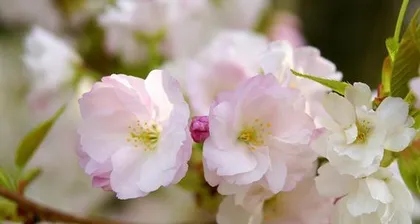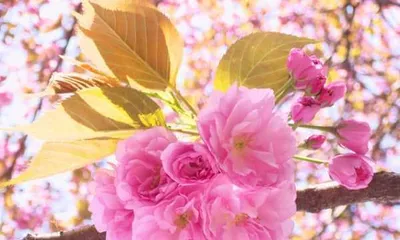As a representative flower of spring, cherry blossoms are deeply loved by people. However, many people encounter problems when growing cherry blossoms, such as withered leaves and falling flowers. This article will detail the care methods for cherry blossoms, allowing you to easily have a beautiful cherry tree.

I. Choosing the Right Location
When choosing a location to plant cherry blossoms, the first thing to consider is the sunlight and ventilation conditions. Cherry blossoms like to grow in full sun and require a well-ventilated environment. It is best to plant them in a place with plenty of sunlight and good air circulation.
II. Selecting Suitable Soil
Cherry blossoms have relatively high requirements for soil and prefer loose, fertile loam rich in nutrients. When planting in poor soil, you can mix a certain amount of mature organic fertilizer into the soil to increase its fertility.

III. Moderate Fertilization
Cherry blossoms need sufficient nutrients for growth, but excessive fertilization can damage the roots, thereby affecting the plant's growth. Top dressing is usually done in spring and autumn, and fertilization should be avoided in summer.
IV. Watering Techniques
Cherry blossoms have a high demand for water, but overwatering can easily lead to root rot. Generally, watering once a week to keep the soil moist is sufficient. In hot seasons, the frequency of watering should be appropriately increased.
V. Pruning Methods
Pruning cherry blossoms mainly includes root pruning and branch pruning. Root pruning can promote plant growth, but be careful not to over-prune. Branch pruning can maintain the beautiful shape of the cherry tree, but do not over-prune, as it will affect the plant's growth.

VI. Pest and Disease Control
Cherry blossoms are susceptible to pests and diseases, with common ones including powdery mildew, anthracnose, and aphids. It is important to detect them promptly and take corresponding preventive and control measures, such as spraying insecticides or using fungicides.
VII. Transplantation Notes
Transplanting of cherry blossoms is generally done in spring and autumn, but it should not be done during the plant's growing period. When transplanting, keep the root system intact and avoid damaging the roots.
VIII. Insulation Measures
Cherry blossoms are susceptible to frost damage in cold winters, so it is necessary to take insulation measures, such as covering the soil with straw, dead leaves, or wrapping the trunk with insulating materials.
Caring for cherry blossoms requires attention to selecting the right location and soil, moderate fertilization, proper watering, scientific pruning, timely pest and disease control, paying attention to transplantation notes, and taking insulation measures. Only by doing these well can you have a beautiful cherry tree.